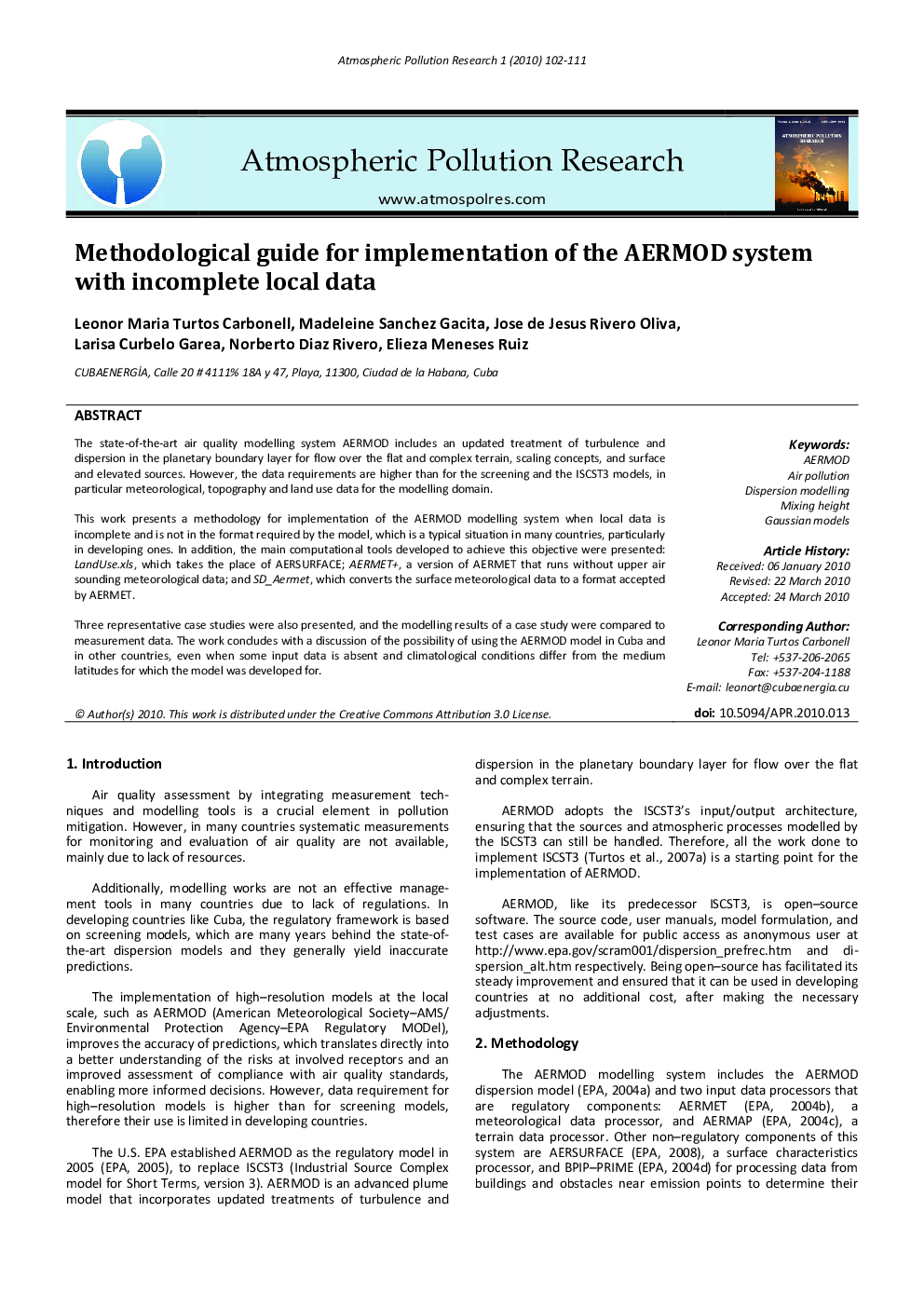| Article ID | Journal | Published Year | Pages | File Type |
|---|---|---|---|---|
| 4434973 | Atmospheric Pollution Research | 2010 | 10 Pages |
The state-of-the-art air quality modelling system AERMOD includes an updated treatment of turbulence and dispersion in the planetary boundary layer for flow over the flat and complex terrain, scaling concepts, and surface and elevated sources. However, the data requirements are higher than for the screening and the ISCST3 models, in particular meteorological, topography and land use data for the modelling domain.This work presents a methodology for implementation of the AERMOD modelling system when local data is incomplete and is not in the format required by the model, which is a typical situation in many countries, particularly in developing ones. In addition, the main computational tools developed to achieve this objective were presented: LandUse.xls, which takes the place of AERSURFACE; AERMET+, a version of AERMET that runs without upper air sounding meteorological data; and SD_Aermet, which converts the surface meteorological data to a format accepted by AERMET.Three representative case studies were also presented, and the modelling results of a case study were compared to measurement data. The work concludes with a discussion of the possibility of using the AERMOD model in Cuba and in other countries, even when some input data is absent and climatological conditions differ from the medium latitudes for which the model was developed for.
